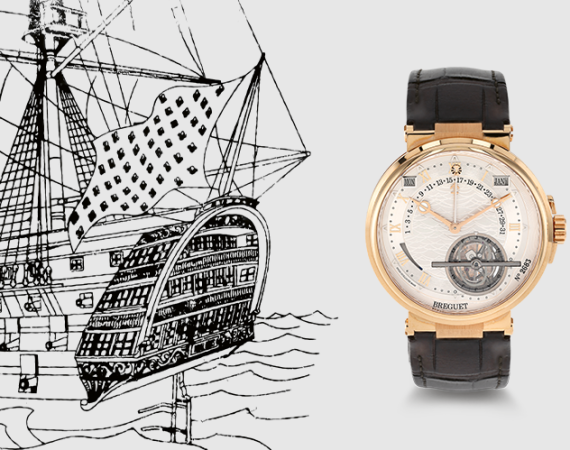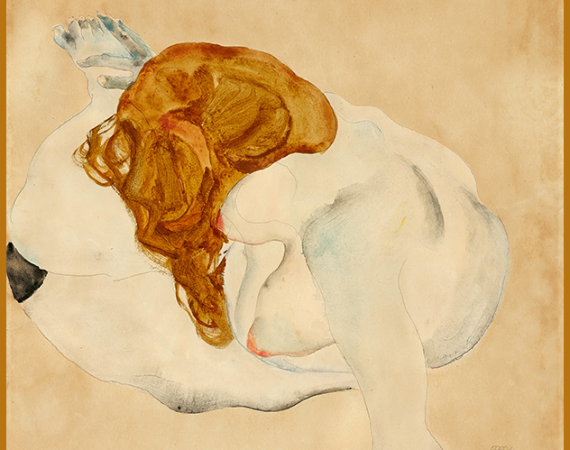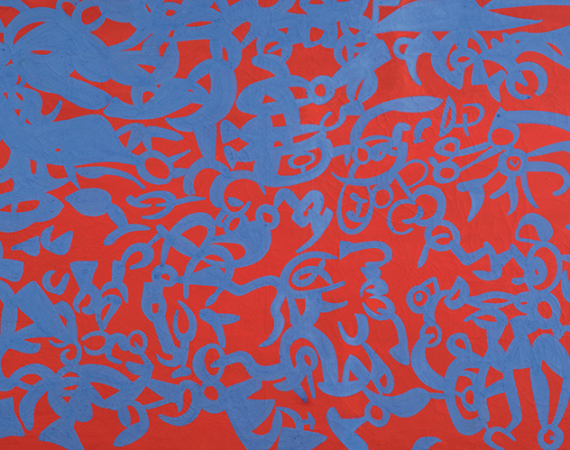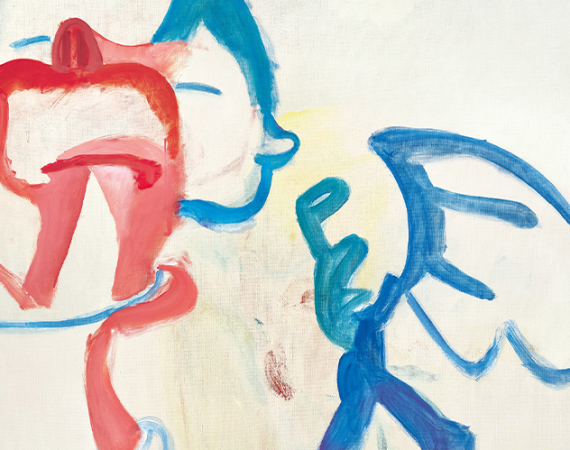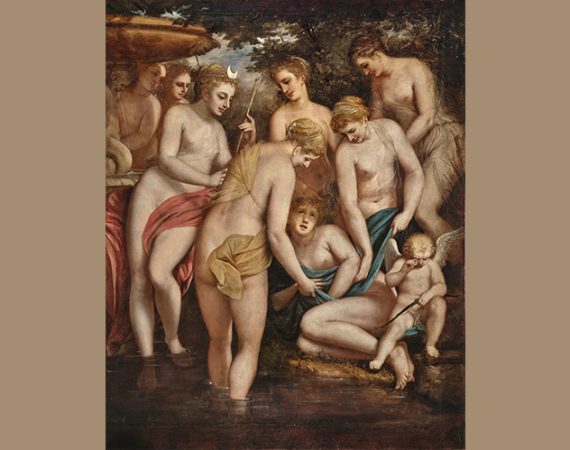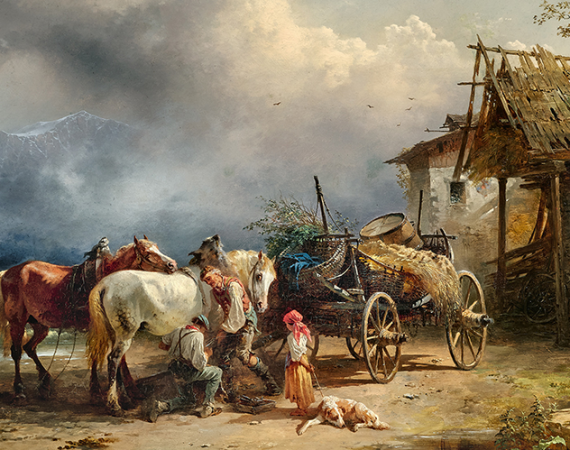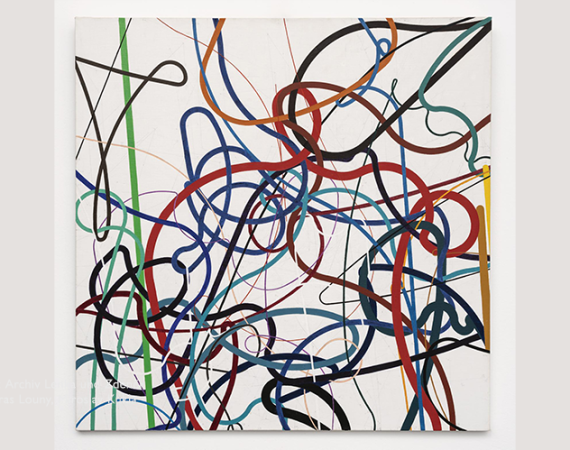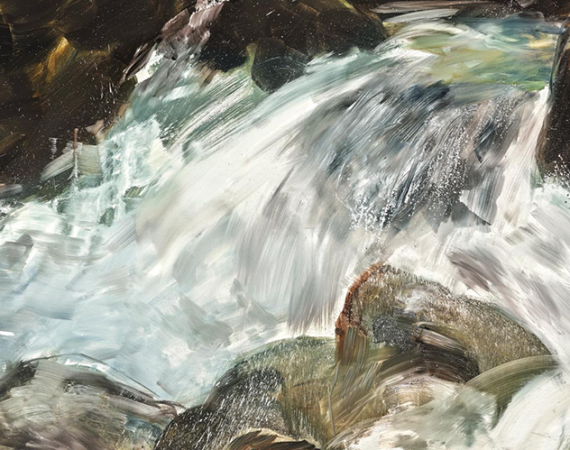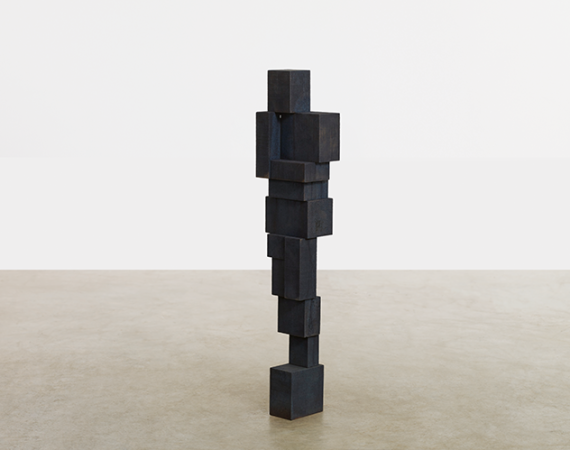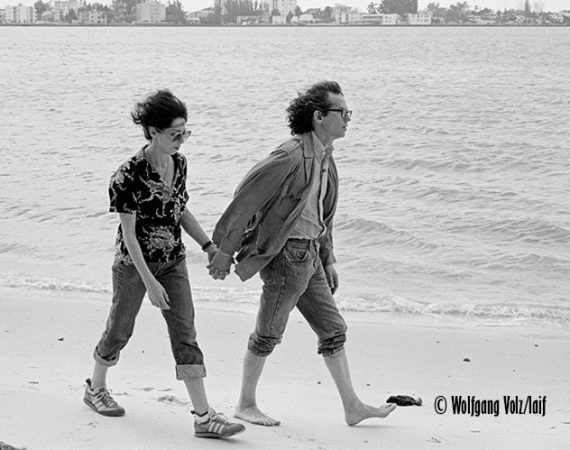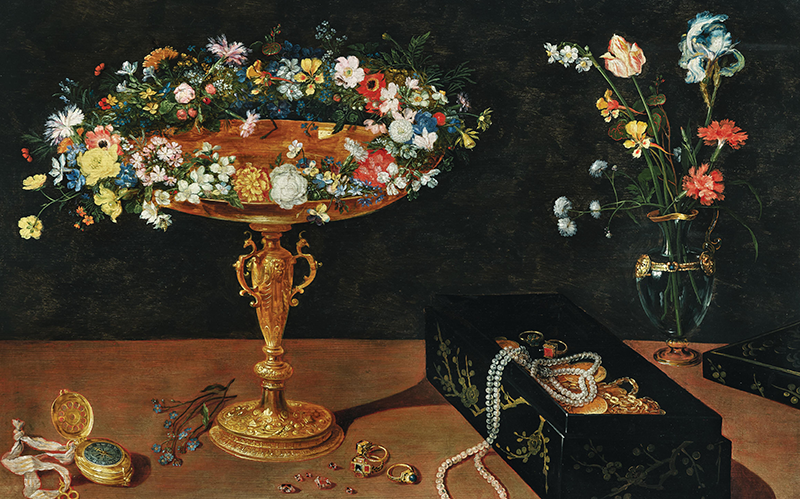
Ranging from opulent flower arrangements and lavish table settings to vanitas and trompe l‘œil motifs: still life painting has enjoyed great popularity for hundreds of years. The art of still lifes is not only a bravura representation of precious objects but also contains a language of complex symbolism. Deciphering a still life from the Old Masters sale: A tazza with a wreath of flowers by Jan Brueghel II.
1 THE TICKING OF TIME
With its reference to the transience of all earthly things, the clock is a classic vanitas motif. The hand points to twelve, the end of the day – a metaphor for the finiteness of human life. The pocket watch depicted here, with its winding key hanging from a fabric strap, is one of the earliest of its kind. Watches that could be worn – by men on a chain in a trouser or jacket pocket, by women on a chain around the neck or at the waist – were exclusive, prestige objects in the 17th century.
2 FLOWER OF REMEMBRANCE
The forget-me-not has been known by its popular name since the 15th century. Historical German texts also refer to it as fridiles auga (“eye of the beloved”), reflecting a long tradition of its significance as a flower of lovers. In Christian folklore, legend has it that Jesus looked into Mary’s eyes while seated on her lap and wished that future generations could share the sight. He touched her iris and then stroked the earth, from which the blue flowers of the forget-me-not immediately sprouted. These sources explain the symbolism of the plant as a sign of fidelity, love, and precious memories.
3 OPULENT FLORAL MAGIC
The ornate and gilded tazza is a testament to master craftsmanship. Sumptuous bowls of this kind were usually used to serve wine or delicacies such as candied fruit. The vessel is crowned by an opulent wreath of carnations, roses, violets, blue stars, daffodils, marigolds, pansies, ranunculi, periwinkle, forget-me-nots, and other flowers – a botanical diversity of flowers that would never have bloomed simultaneously and in the same place in nature. The splendour is an expression of cosmic creation and worldly wealth in an era when vast sums were paid for flower seeds and bulbs. In Christian symbolism, the wreath of flowers was traditionally associated with chastity and virginity, and individual flowers such as the marigold, the rose, and the periwinkle were widely recognised Marian symbols.
4 PERIL IN PARADISE
The small, inconspicuous wasp among the flowers serves as a reminder that even amidst the most magnificent beauty, transience and danger are ever-present. It acts as a symbol of vanitas, pointing to the dichotomy of nature between beauty and decay.
5 PRECIOUS STONES
Golden rings with colourful gemstones and diamonds shine brightly on the reddish cloth. From the 16th century onwards, Antwerp, where the painting is believed to have been created, was regarded as the most important centre of the diamond trade. Although the modern brilliant cut was developed in Bruges and refined in the Kempen region, Antwerp benefited from its favourable location and important inland port.
6 BAROQUE LUXURY
The black lacquer box decorated with cherry branches and blossoms is particularly precious, an example of the millennia-old Japanese art of urushi. Due to the time-consuming manufacturing process, such lacquer works were among the most exquisite luxury goods. From the 17th century onwards, they arrived in Europe in large numbers and soon found their way into the collections of the wealthy classes. The box contains a precious necklace made of natural pearls. Jewellery made from pearls has been coveted since ancient times and was also highly prized in the 17th century due to its rarity. Worn mainly by women, natural pearls were considered a symbol of Mary’s purity and virginity in the Christian canon of virtues.
7 FRAGILE BEAUT Y
The glass vase – here containing a small bouquet of tulips, irises, daffodils, and carnations – has a particularly ambivalent meaning in the symbolism of still lifes: on the one hand, it represents the preciousness and craftsmanship of Venetian and Bohemian glassmaking, and on the other, the fragility of existence.
The symbols in this painting contain strong vanitas motifs in the Christian sense, emphasizing the futility of human ambitions and the accumulation of earthly luxuries in the face of inevitable death. A further level of meaning emerges through the use of Marian symbolism in the depiction of female virtues such as purity, fidelity, and chastity. At the same time however, the skilful capturing of precious objects in a painted image might also allow for interpretation of artistic rebellion – a still life painting like this could be read as the triumph of artistic endeavour over the transience of life.
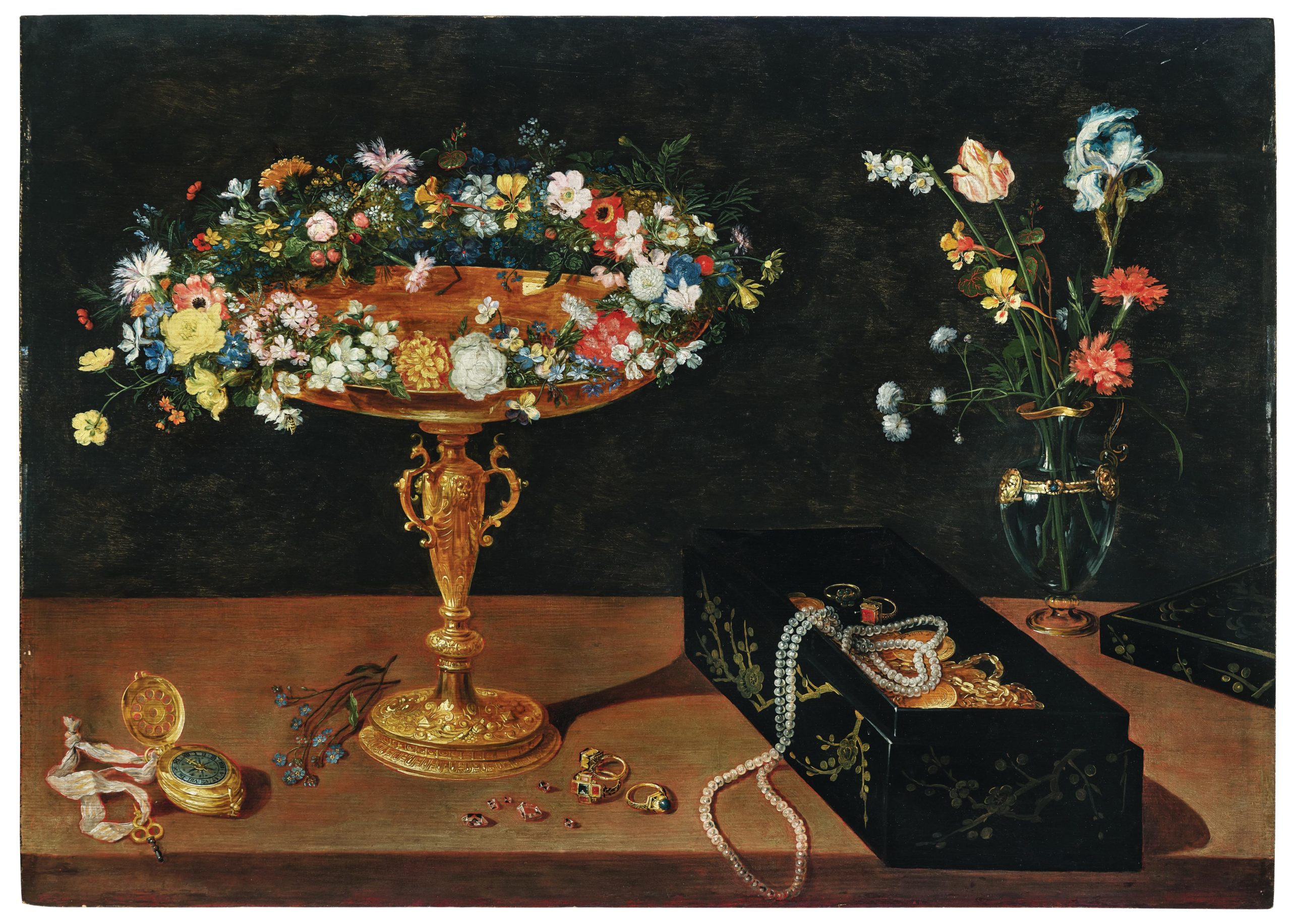
AUCTION
Old Masters
23 October 2025
Palais Dorotheum, Dorotheergasse 17, 1010 Wien
oldmasters@dorotheum.com
Tel. +43-1-515 60-403

